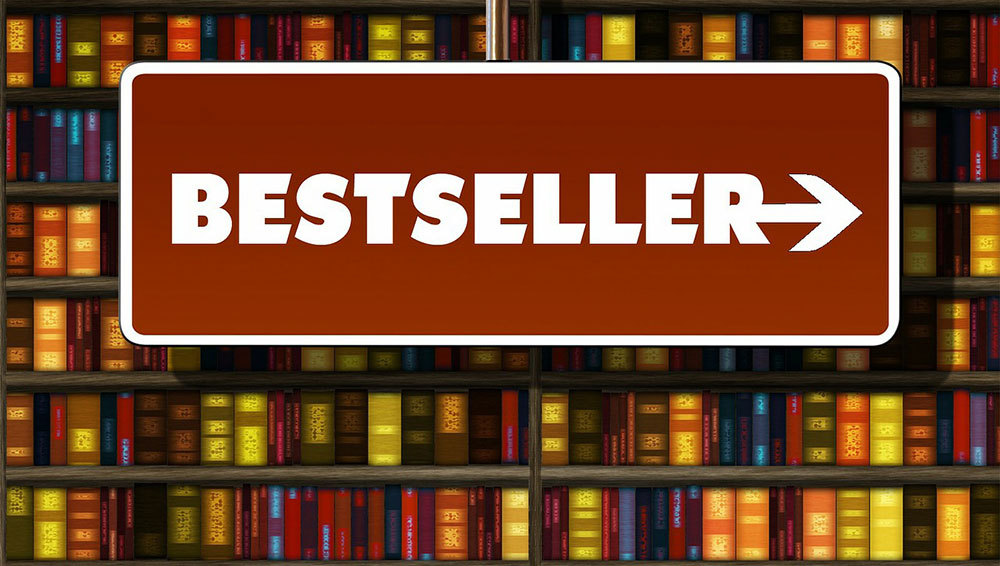It takes a lot to get a book into the hands of its readers. The cover design, jacket copy, carefully curated blurbs, and publicity surrounding the book all work together to attract readers, all before they read a single word the author has written. All this work goes into making sure the book is noticed on the shelf, and then it’s up to the bookseller.
Like publishers, booksellers are passionate about delivering books to the readers who will enjoy them the most. A lot of careful consideration, meticulous thought, and intense debate goes into positioning books on the shelves so that readers can find the one they can’t put down.
Whether you’re walking into a Barnes & Noble or a local used bookstore, the first thing you generally notice is the books positioned strategically in front of the door. I worked at an indie bookstore in a small college town for five years. Although our town was small, we were one of three bookstores in a five-block radius and the competition for readers was fierce, especially since we were supposed to be a one-stop shop, selling used, new, and remaindered books. If we didn’t have copies of Stephen King’s new horror novel, we knew our customers would go to the bookstore on Second Street that was half our size and stocked the newest of new releases. Likewise, if Stephen King’s new horror novel was out and we hadn’t acquired a used copy yet, we knew our customers would march up Fourth Street to the shop that boasted an impressive collection of used books.
We had the advantage of having two entrances. Our bigger entrance, used more often by people who wanted to experience the bookstore and were more open to impulse buying, was our best seller arena. We had a two-pronged strategy for this display space: pulling titles from various best seller lists and always listening for what our specific customers were enjoying. Best-selling fiction and nonfiction were the core of our display arena. Each had a bookcase to itself; one side was the hardcover recent releases, and the other side housed paperbacks that had either recently been released in paperback or had seen a resurgence after an initial decline in popularity. These displays were supplemented by a thin bookcase that was directly across from the front doors that housed topical hits: celebrity memoirs, cultural phenomena, and sometimes staff must-reads if we could get away with it. This shelf was in constant flux, overseen by our astute manager, who kept a keen eye on what books had been given the golden seal of approval by Oprah, what authors were being interviewed by NPR, and which topics our customers were tuned into.
As the readership needs of the town subtly changed over time and the staff turned over, the front display shifted. After the 2016 presidential election, we added current events/politics best sellers to supplement fiction and nonfiction. After our newest hire revitalized our children’s section (a job no one wanted and was often neglected), we dedicated another floating display up front to popular kids’ releases. Unlike the adult fiction, the content of the popular kids’ display was decided not by what individual books had come at recently or were popular, but by what series and authors stood the test of time. When the store’s ownership changed and we began putting more effort into fostering relationships with local authors, we moved the Local Author section from the depths of Literature and helped it find its home on the endcap of the Best sellers section with a prominent sign that proudly announced their origin.
While our main goal was to deliver books into the hands of readers, booksellers are booklovers. We had our own desires and favorites that couldn’t always be contained in our modest (about four to five books per employee) Staff Recommends sections. Our manager came up with the idea of a display she called “Have You Seen This?” to promote books we were personally ecstatic about. While there wasn’t room for this display up front, it still had a respectable spot in the middle of the store, within the eyeline of anyone who wandered in through the auxiliary entrance. Here, we promoted promising, new authors who didn’t have clout or a readership yet, old classics we worried might otherwise be forgotten, and just generally any book we thought everyone needed to read.
A book’s place on the shelf is just one stop in its journey. When a book is championed by passionate publishers and booksellers, they find their way to their readers’ waiting hands.

